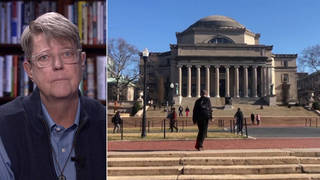New figures show the ozone layer is restoring after years of depletion. The United Nations says stratospheric ozone is on pace to fully recover by the middle of the century. Achim Steiner of the United Nations Environment Programme credited the banning of certain chemicals from aerosol and refrigerants under the 1987 Montreal Protocol.
Achim Steiner: “The world avoided a major problem by getting rid of ozone-depleting substances by the Montreal Protocol. Indeed, without this protocol and all the actions that we have taken across the globe, we would be seeing a very substantial global ozone depletion today. We’ve seen evidence of a decline in ozone-depleting substances over the past decade. Now we are starting to see increasingly encouraging signs from ozone measurements that the ozone layer is on track to recovery by the middle of this century.”
Without the Montreal Protocol, the United Nations says two million extra cases of skin cancer would have occurred each year by 2030. But this rare bit of environmental news has also come at a cost. Many companies have replaced ozone-depleting chemicals with hydrofluorocarbons, HFCs, which worsen global warming.
Achim Steiner: “We are at a critical point. Where HFCs were introduced in order to address the issue of ozone depletion, what we did not anticipate at the time or what was not foreseen is that if the use of HFCs continues to increase at the rate that we now envisage, which is roughly increasing at a rate of 7 percent a year, and you begin to extrapolate that, then by the year 2050 you could have a major negative issue and challenge in terms of global warming.”
The United Nations says HFCs can be phased out if new action is taken, on top of broader action to tackle global warming. Michel Jarraud of the World Meteorological Organization said: “International action on the ozone layer is a major environmental success story. This should encourage us to display the same level of urgency and unity to tackle the even greater challenge of climate change.”










